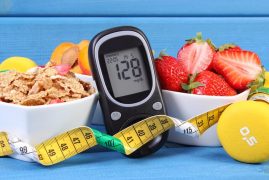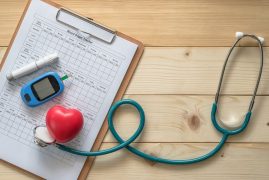Fasting blood glucose, which is a frequently used concept among the people, is the measurement of sugar level on an empty stomach. This term, which is directly related to the insulin level in the body, is a finding determined by the blood test.
If the blood glucose level is 126 and above in the measurement under an eight-hour fasting, this condition is expressed as diabetes. For the diagnosis of diabetes, both fasting and postprandial blood glucose results are evaluated together. Especially in order to be diagnosed with diabetes, these blood measurements should be made regularly and the blood sugar level should be monitored.
In order to speak of normality in the case of fasting blood glucose, the level should be less than 100 mg/dl. If the result is above 126 mg/dl, then the patient is asked to perform a second test. If the result obtained from two different tests on a different day is above 126 mg/dl, then the presence of diabetes is high. Generally, fasting blood glucose level is used for the direct evaluation of carbohydrate metabolism in the body. High results will indicate the presence of diabetes risk.
What Does High Fasting Blood Sugar Mean?
In order for the patient to have a high fasting blood glucose, the measurement value made after 8 to 12 hours of fasting should exceed 126 mg/dl. If the results obtained are between 110 mg/dl and 140 mg/dl, then latent diabetes is mentioned.
All measurements are made by blood test, and according to the values reached, information about the functioning of organs such as the pancreas, kidneys and insulin level is obtained. In general, fasting and postprandial blood glucose measurements are made on the same day in order to achieve clear results. The patient has a blood test after prolonged fasting and then eats his first meal. Two hours after this, the postprandial blood glucose measurement takes place in the same way. Diabetes is checked by comparing the values obtained with each other.
Thanks to the insulin hormone in the body, sugar taken from foods passes into the blood and cells. If the insulin level in the body is insufficient, the substances that need to be taken from foods are not taken and the blood sugar level rises. The glucose ratio measured at various times will be sufficient to diagnose height. At the end of the measurements, if the patient is diagnosed with diabetes, procedures such as lifestyle changes, exercise and nutrition plan, continuous monitoring and monitoring of sugar levels will be performed. All of these are important in terms of controlling blood sugar. The process progresses with the physician’s guidance, and with continuous glucose measurement, the physician can apply the correct treatment program.
Fasting High Blood Sugar Symptoms
Fasting blood glucose symptoms are divided into two groups as frequent and rare symptoms. Accordingly, the desire to drink too much water, frequent urination at night, lack of appetite or eating too much, fatigue in a short time, dry mouth are among the common symptoms.
Rare symptoms of fasting blood sugar are expressed as recurrent fungal infections, blurred vision, persistent infections, and weight loss whose cause cannot be expressed. When these symptoms are seen, a doctor should be consulted for measurement and the treatment plan recommended by the doctor should be followed completely. If the person has conditions such as chronic kidney failure, trauma, heart attack, cushing syndrome and acromegaly, the possibility of increased blood sugar is slightly higher than normal.
High fasting blood glucose is common among the public, and some people are a little more at risk. Accordingly, the presence of people between the ages of 45 and 50 and those who have been diagnosed with diabetes before in their family increases the likelihood of this situation. However, it should not be neglected if there are symptoms of fasting blood glucose in patients. The measures not taken in time may progress to coma in the person. People who are diagnosed with diabetes by their physician should pay attention to sugar monitoring at home. Thus, changes in glucose level will be continuously monitored and the data obtained will be shared with the physician. Although some patients are uncomfortable with finger piercing, this process is of great importance in order to keep the disease under control. Today, thanks to the development of technological possibilities, innovations have been experienced in finger measuring devices and sugar level monitoring devices that do not feel pain and measure in different ways have been developed.



